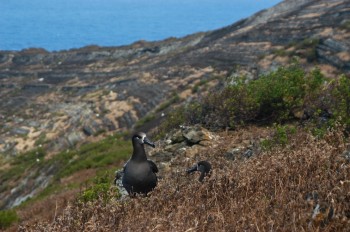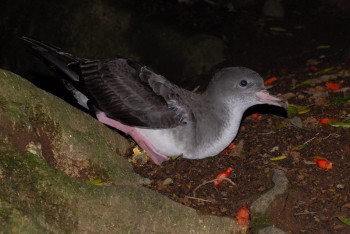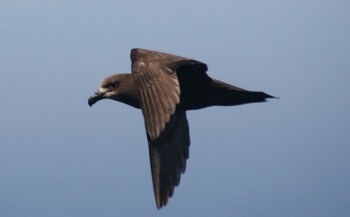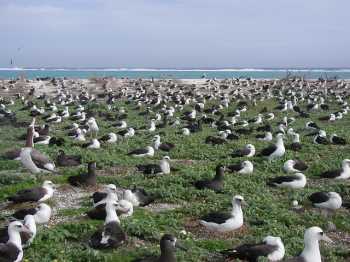Lehua, one of the USA’s Hawaiian Islands, supports small populations of Black-footed Phoebastria nigripes and Laysan P. immutabilis Albatrosses (click here). Wedge-tailed Shearwaters Puffinus pacificus breed in large numbers (an estimated 23 000 pairs) on Lehua and the island also holds an important population of Bulwer’s Petrels Bulweria bulwerii. Newell’s Shearwater P. newelli and Madeiran or Band-rumped Storm Petrel Oceanodroma castro have both been confirmed breeding on the island in the past, although if any remain to the present day they are present in extremely small numbers. In addition the Christmas Shearwater P. nativitatus is suspected of breeding.
The uninhabited 126-ha island was the target of an eradication attempt in 2009 which failed to remove its introduced rodents. Field research with an aerial drop of non-toxic bait has now taken place towards making a second attempt to rid the island of rats (click here).
Lehua Island from the air
The uninhabited 126-ha island was the target of an eradication attempt in 2009 which failed to remove its introduced rodents. Field research with an aerial drop of non-toxic bait has now taken place towards making a second attempt to rid the island of rats (click here)

A Black-footed Albatross pair on Lehua, photograph by Eric Vanderwerf
"The results of the aerial drop project will provide guidance for the potential development of a new project to use a rodenticide to control Lehua’s invasive rat population. The project would be at least one year out."
John Cooper, ACAP Information Officer, 29 September 2015

 English
English  Français
Français  Español
Español 



